
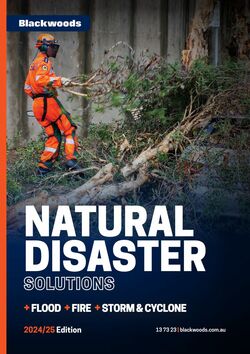



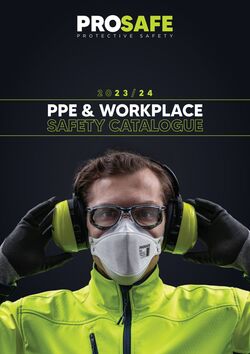
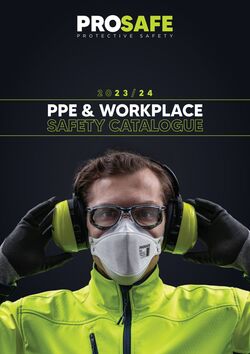




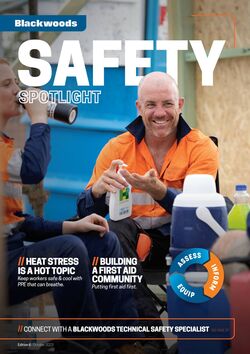

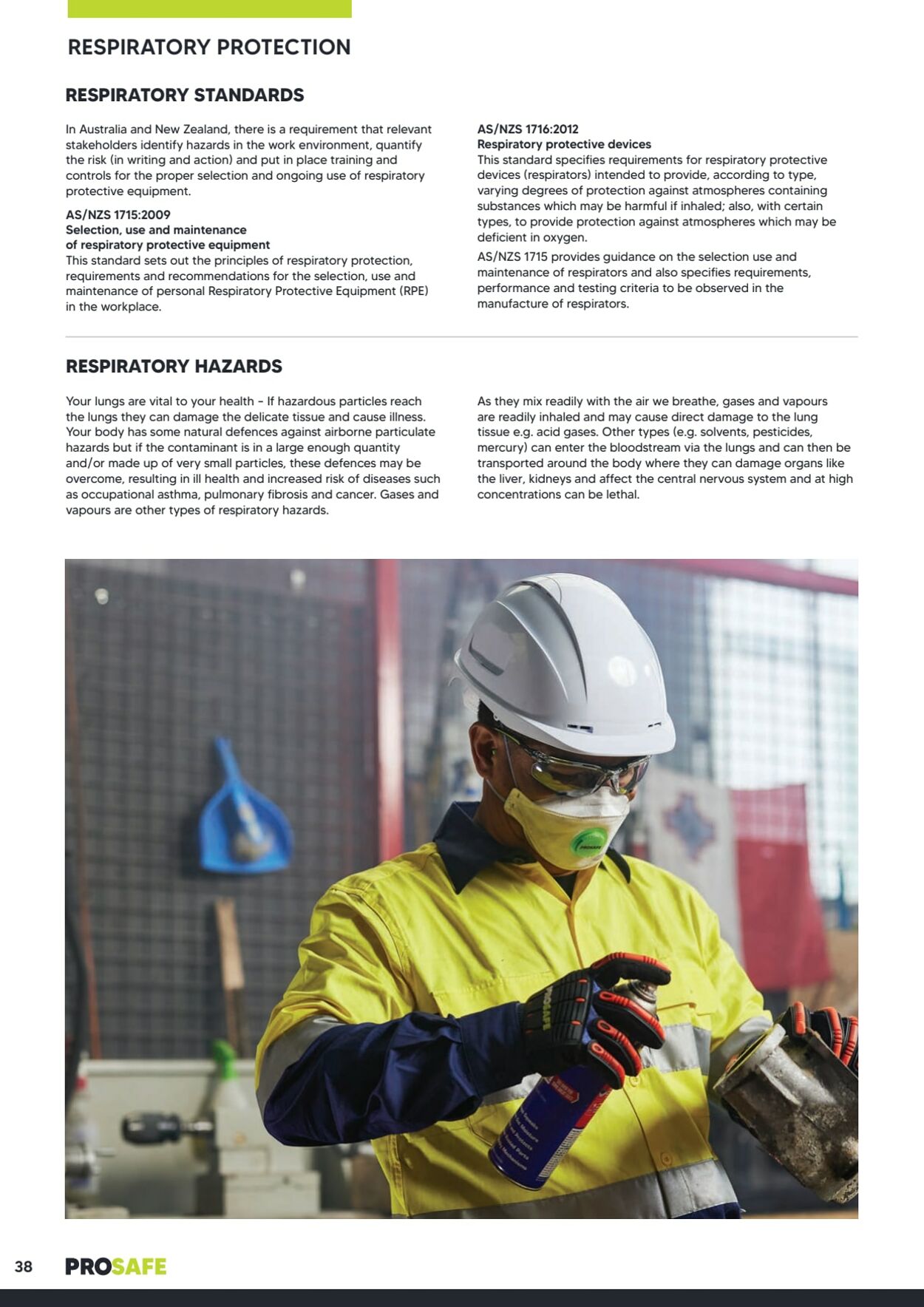
Products in this catalogue
RESPIRATORY PROTECTION RESPIRATORY STANDARDS In Australia and New Zealand, there is a requirement that relevant stakeholders identify hazards in the work environment, quantify the risk (in writing and action) and put in place training and controls for the proper selection and ongoing use of respiratory protective equipment. AS/NZS 1715:2009 Selection, use and maintenance of respiratory protective equipment This standard sets out the principles of respiratory protection, requirements and recommendations for the selection, use and maintenance of personal Respiratory Protective Equipment (RPE) in the workplace. RESPIRATORY HAZARDS Your lungs are vital to your health - If hazardous particles reach the lungs they can damage the delicate tissue and cause illness. Your body has some natural defences against airborne particulate hazards but if the contaminant is in a large enough quantity and/or made up of very small particles, these defences may be overcome, resulting in ill health and increased risk of diseases such as occupational asthma, pulmonary fibrosis and cancer. Gases and vapours are other types of respiratory hazards. AS/NZS 1716:2012 Respiratory protective devices This standard specifies requirements for respiratory protective devices (respirators) intended to provide, according to type, varying degrees of protection against atmospheres containing substances which may be harmful if inhaled; also, with certain types, to provide protection against atmospheres which may be deficient in oxygen. AS/NZS 1715 provides guidance on the selection use and maintenance of respirators and also specifies requirements, performance and testing criteria to be observed in the manufacture of respirators. As they mix readily with the air we breathe, gases and vapours are readily inhaled and may cause direct damage to the lung tissue e.g. acid gases. Other types (e.g. solvents, pesticides, mercury) can enter the bloodstream via the lungs and can then be transported around the body where they can damage organs like the liver, kidneys and affect the central nervous system and at high concentrations can be lethal.
| Name | Details |
|---|